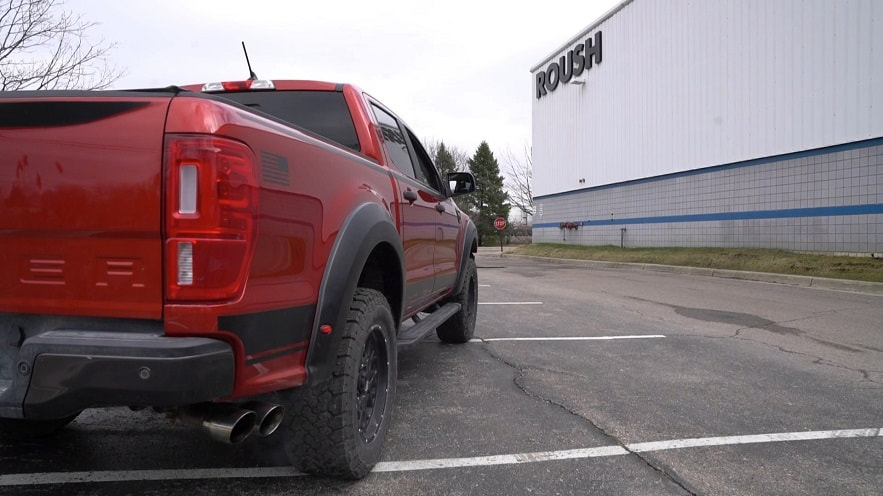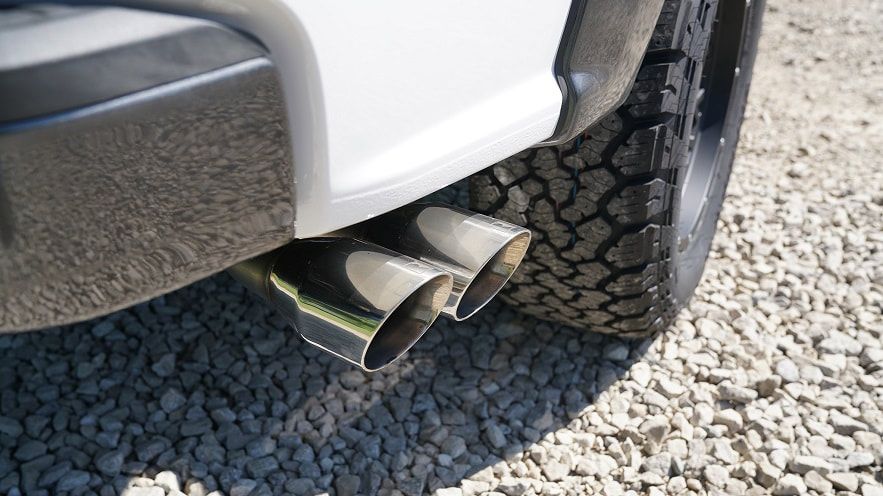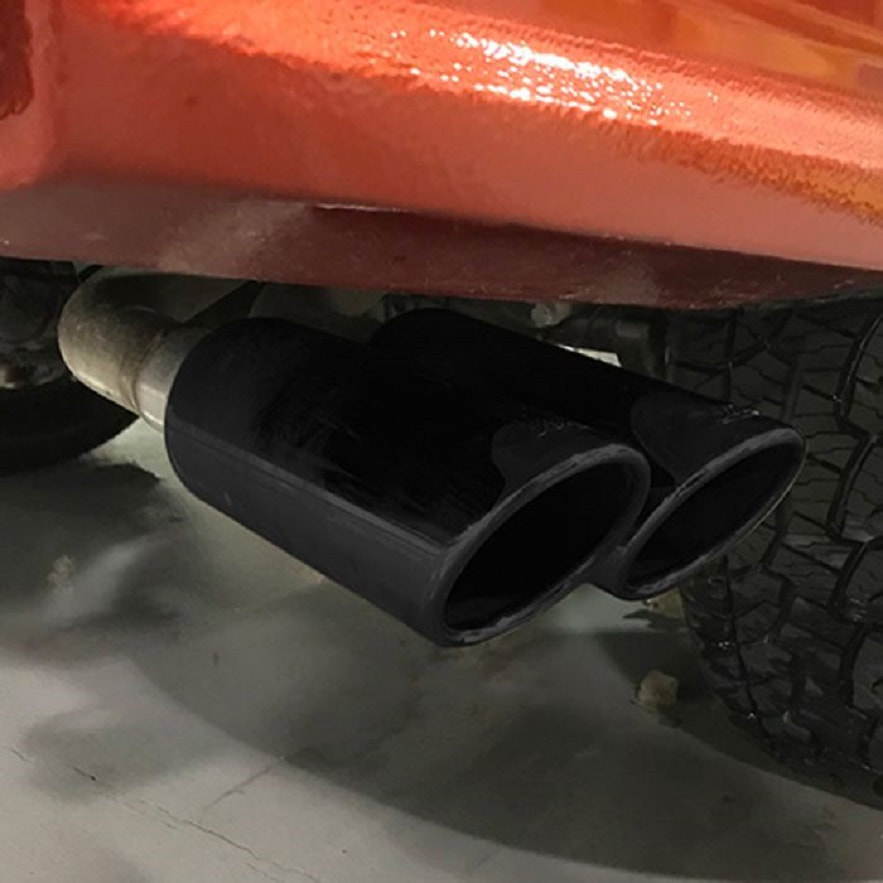With its first model being introduced back in 1982, Ford's Ranger was and still is a trim pickup. Although the truck is based on a 1958 sedan, the Edsel Ranger, it took more than 30 years to make it ready for the masses. Throughout the late eighties the Ranger served as the basis for Ford's second generation Bronco models and in the 90s the second generation Ranger came. After that there was an electric version of the Ranger which didn't do quite well.
The third and fourth generation Ranger changed up some things but the course of the ranger stayed roughly the same until 2019. This was the year when Ford re-released the Ranger. Now more than ever this new Ranger model is the best Ford have done in this series of trucks. But despite being new an aftermarket upgrade is always welcomed especially when it comes to performance.
Catalytic Converter
Although a Ford Ranger exhaust is comprised of multiple other parts and is far more complex than it used to be one important place to start is with the cat converter. This component is part of every Ranger exhaust since it helps filter out harmful emissions. These emissions are hydrocarbons, carbon monoxide and nitrogen oxide which are whats left from the engine's internal combustion process.
A catalytic converter has precious metals such as platinum that act as catalysts in the conversion process. The aforementioned gasses get converted to oxygen, water and carbon dioxide. Since a catalyst helps accelerate a chemical reaction without being used up a cat converter may last forever.
A catalytic converter has precious metals such as platinum that act as catalysts in the conversion process. The aforementioned gasses get converted to oxygen, water and carbon dioxide. Since a catalyst helps accelerate a chemical reaction without being used up a cat converter may last forever.
Types of Catalytic Converters
There are two types of catalytic converters, two and three-way. The former are mainly used on diesel powered Rangers like the XLS. Two-way converters help with the oxidation of carbon monoxide to carbon dioxide and with the oxidation of hydrocarbon to carbon dioxide and water.
Three-way catalytic converters, on the other hand, control the emissions of nitrous oxide alongside being able to convert both carbon monoxide and hydrocarbons to harmless gasses. Whilst you want the best of performance for your Ranger you need to first take care of the emissions it generates.
Three-way catalytic converters, on the other hand, control the emissions of nitrous oxide alongside being able to convert both carbon monoxide and hydrocarbons to harmless gasses. Whilst you want the best of performance for your Ranger you need to first take care of the emissions it generates.
Header
The header is what connects your Ranger exhaust to the engine. This is the first part in line if your looking at your vehicle from the bonnet. Headers affect the flow of gasses and the more easily air can enter into them the better the overall performance of your Ranger. A header is one of the first components being replaced for performance gains.
The main thing you need to consider with headers is the material they're made of. In this case steel headers are going to be the most affordable ones but also the ones with the shortest lifespan. Stainless steel headers are a better option since they last a lot longer than steel ones and they look great too.
Looks aside if you want something that will perform far better than a stainless steel header, go for one with a ceramic coating. These types of headers withstand the highest of temperatures and last longer than both steel and stainless steel headers.
One more thing you might want to consider with headers is their size. Whilst bigger headers will have wider pipes this is not always a better option. Sure, wider diameter pipes allow for greater air volume it doesn't always mean exhaust gasses will escape more easily. Sometimes smaller diameter pipes help exhaust gasses escape quicker without letting out more gasses at once.
The main thing you need to consider with headers is the material they're made of. In this case steel headers are going to be the most affordable ones but also the ones with the shortest lifespan. Stainless steel headers are a better option since they last a lot longer than steel ones and they look great too.
Looks aside if you want something that will perform far better than a stainless steel header, go for one with a ceramic coating. These types of headers withstand the highest of temperatures and last longer than both steel and stainless steel headers.
One more thing you might want to consider with headers is their size. Whilst bigger headers will have wider pipes this is not always a better option. Sure, wider diameter pipes allow for greater air volume it doesn't always mean exhaust gasses will escape more easily. Sometimes smaller diameter pipes help exhaust gasses escape quicker without letting out more gasses at once.
Muffler
Whilst a muffler controls the level of noise being exerted by your Ford Ranger exhaust it also affects performance quite a lot. The more restrictive a muffler is the quieter the exhaust but also the less powerful it is and vice versa. There are three types of mufflers, chambered, straight-through, and turbo.
Chambered mufflers are comprised from a series of inner chambers at specific lengths to reflect sound waves against each other. This Ford Ranger exhaust upgrade causes the sound waves to cancel each other out which reduces the exhaust noise. The reduction in noise and exhaust tone depends on the number and size of chambers.
Straight-through mufflers are made to provide the maximum amount of airflow. This means that there are no chambers or anything else in the way of sound waves. What is also known as a glasspack has a perforated pipe wrapped in sound absorbing material. Since there is nothing in the way of airlfow, straight-through mufflers provide the best performance levels a Ranger can get.
Turbo mufflers have a set of perforated tubes shapes like the letter “S”. These guide exhaust gasses in a more restrictive manner than straight-through mufflers. Turbo mufflers, like straight-through mufflers have sound absorbing material wrapped around the tubes. Whilst ideal for street applications, turbo mufflers are not the best when it comes to performance but they also won't make your Ranger the quietest in the neighbourhood.
Chambered mufflers are comprised from a series of inner chambers at specific lengths to reflect sound waves against each other. This Ford Ranger exhaust upgrade causes the sound waves to cancel each other out which reduces the exhaust noise. The reduction in noise and exhaust tone depends on the number and size of chambers.
Straight-through mufflers are made to provide the maximum amount of airflow. This means that there are no chambers or anything else in the way of sound waves. What is also known as a glasspack has a perforated pipe wrapped in sound absorbing material. Since there is nothing in the way of airlfow, straight-through mufflers provide the best performance levels a Ranger can get.
Turbo mufflers have a set of perforated tubes shapes like the letter “S”. These guide exhaust gasses in a more restrictive manner than straight-through mufflers. Turbo mufflers, like straight-through mufflers have sound absorbing material wrapped around the tubes. Whilst ideal for street applications, turbo mufflers are not the best when it comes to performance but they also won't make your Ranger the quietest in the neighbourhood.




